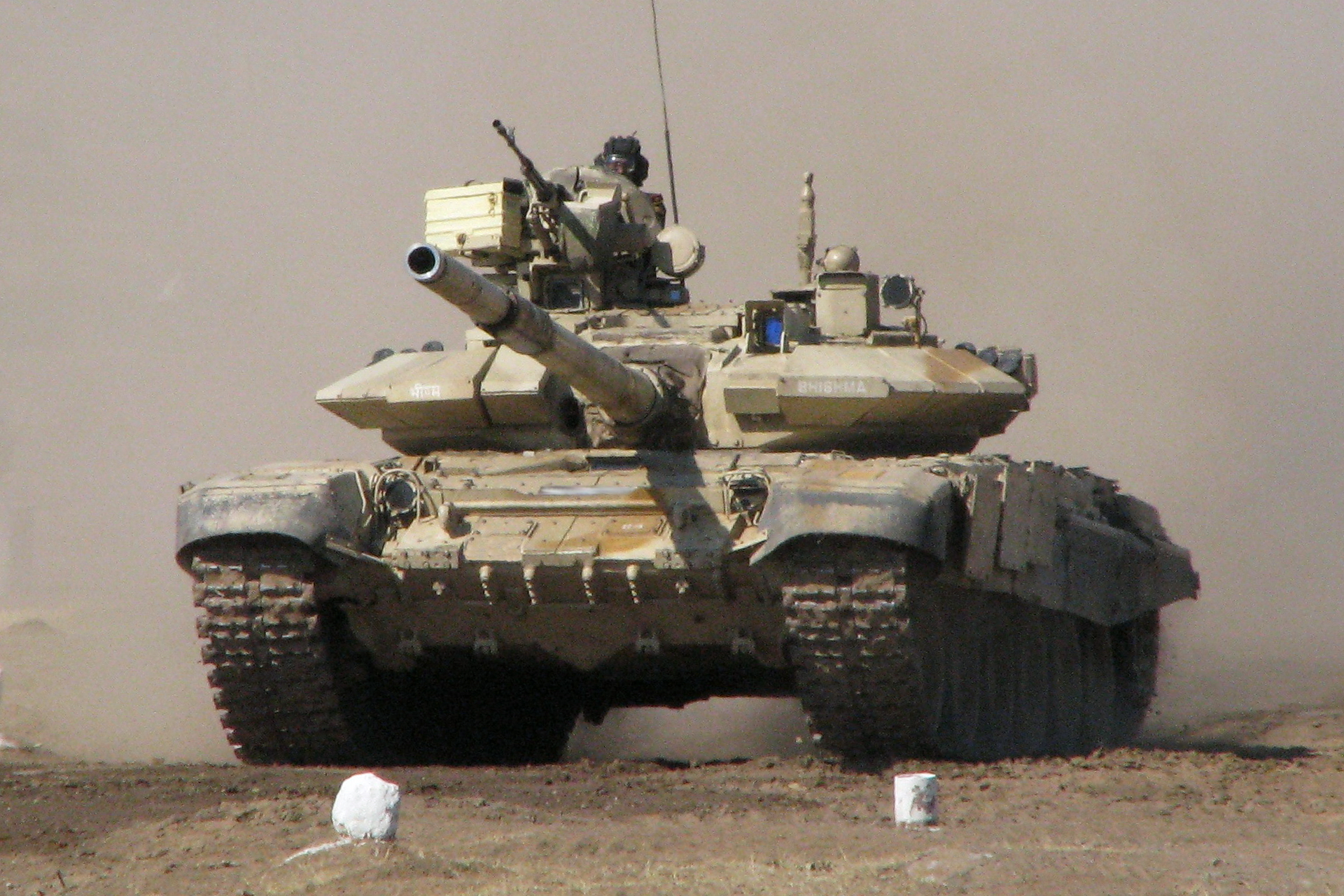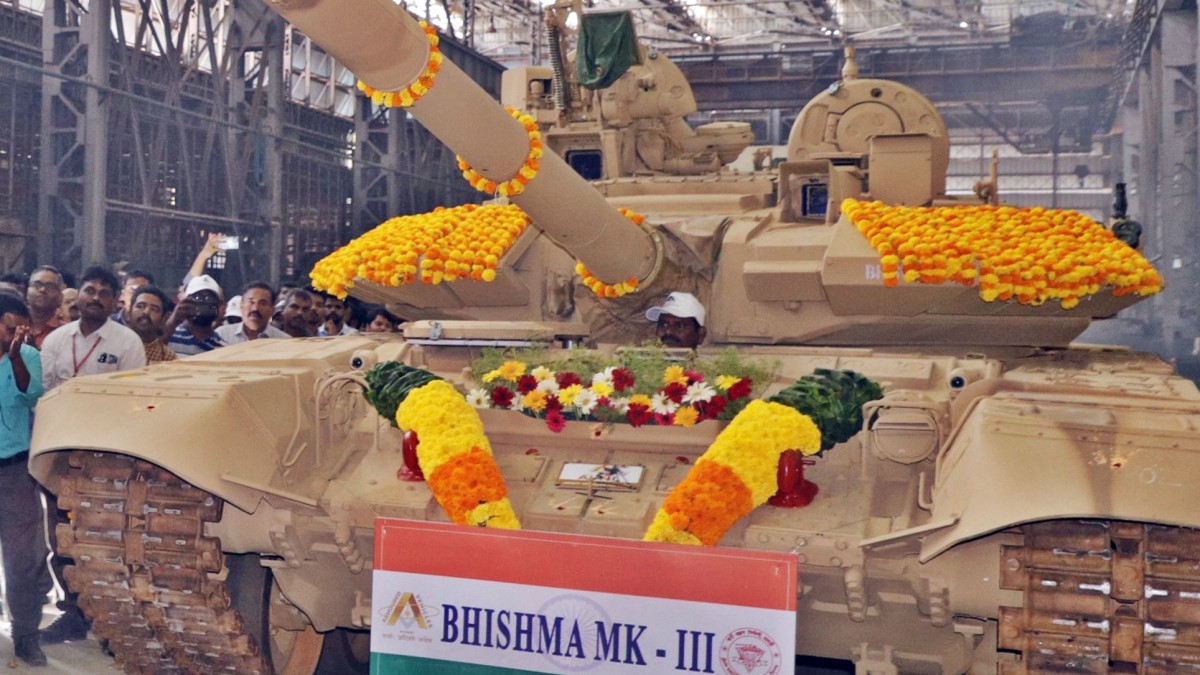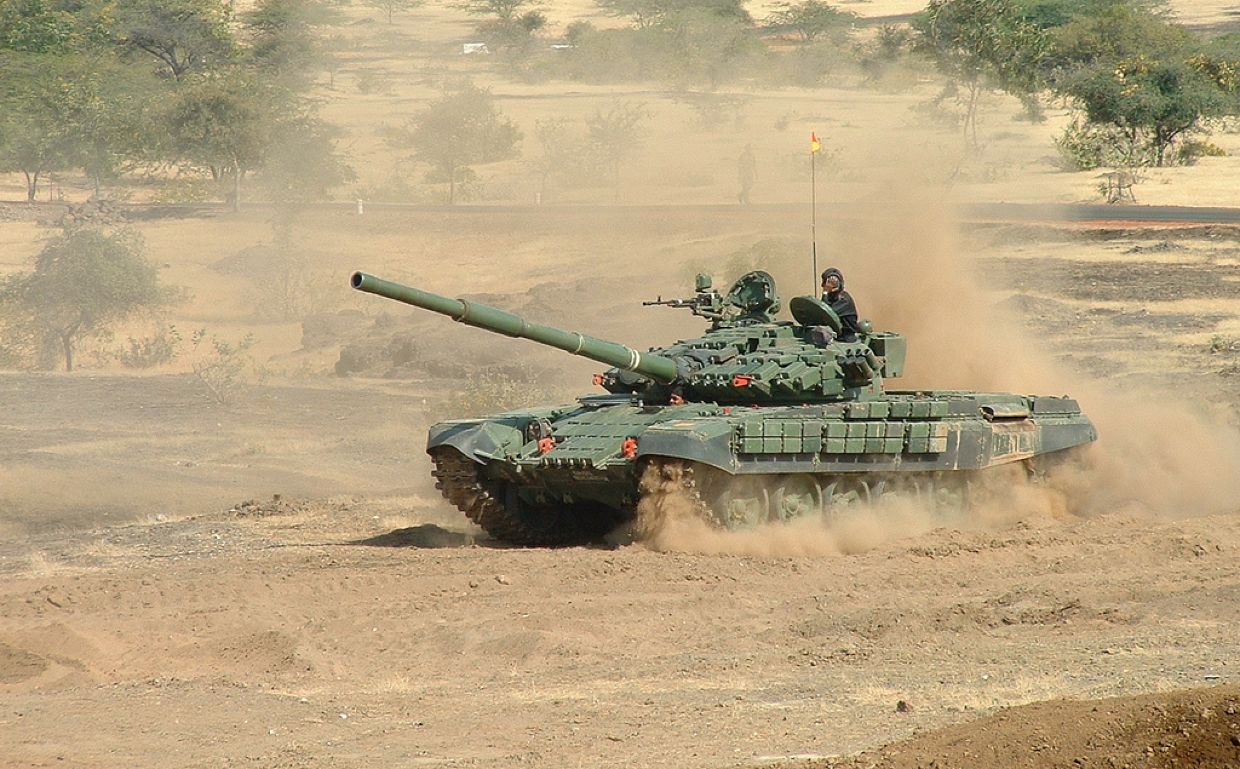The defense partnership between India and Russia has survived the diplomatic headwinds blowing in the wake of the Ukraine War. As security threats on its borders persist, India is now working relentlessly on upgrading many Russian-origin military equipment license-produced in the country.
All three of India’s armed forces rely significantly on Russian-made hardware. Around 90% of the Indian Army’s equipment, including T-90 and T-72 main battle tanks, is of Russian origin. On the other hand, Russian-origin fighter aircraft, including the Su-30MKI, MiG-21, and MiG-29 planes, make up about 71% of the Indian Air Force’s total.
Approximately 41% of the Indian Navy’s equipment, such as the INS Vikramaditya aircraft carrier, MiG-29K fighter jets, and Kilo-class submarines, are imported from Russia, demonstrating the navy’s heavy reliance on Russia.
While the Indian military is dominated by Russian-origin equipment, three systems have continued to shine as the mainstays: the T-90 Main Battle Tank (MBT), the T-72 Main Battle Tank (MBT), and the Su-30MKI combat aircraft.
Amid a two-front threat posed by China and Pakistan, the Indian Ministry of Defense (MoD) is making concerted attempts to upgrade these systems to boost their potential, increase their operational life, and make them more survivable against attacks.
T-90 Bhishma Main Battle Tank
The T-90 MBTs are third-generation Russian-origin battle tanks and the most advanced tanks in the Indian inventory. A US$3.12 billion deal in 2019 allowed India to build 464 T-90S tanks domestically, using Russian designs and parts.
The tanks were deployed in the Eastern Ladakh region along the disputed Line of Actual Control (LAC) when a border clash broke out between the Indian Army and the Chinese People’s Liberation Army (PLA) in 2020. The T-90s are currently the most advanced battle tanks in the Indian inventory and are believed to be the backbone of the Indian armor.
Earlier this week, the Defense Acquisition Council (DAC), chaired by Defense Minister Rajnath Singh, approved a capital acquisition proposal worth Rs 54,000 crores (US$6.26 billion) to strengthen Indian defenses and combat capability.
The upgrade of India’s frontline T-90 tanks is one of the eight proposals approved by the council and focuses on replacing the 1,000 horsepower (HP) engines that power the beast tank with a more powerful 1,300 hp engine. This would be a crucial modification because the new engine will help the T-90s perform better in high-altitude regions of Sikkim and Ladakh (along the LAC), where low air pressure often impacts engine performance.

The upgrade will essentially improve the tactical mobility of tanks for operation in high-altitude regions by boosting the power-to-weight ratio. Needless to say, the upgrades are based on the lessons learned from the 2020 conflict with China, which exposed some vulnerabilities in the Indian armor, including the difficulty of mobility of tanks and armored vehicles on high terrain.
The new engine will boost the power output by improving acceleration, climbing ability, and maneuverability in tough terrains like deserts, mountains, and riverine regions. As per experts cited in the Indian media reports, the engine upgrade will also allow the tank to reposition itself quickly and avoid hostile fire.
The Indian Army currently operates over 1,200 T-90 Bhishma tanks and is also producing an upgraded version of the tank, the T-90 Mk-III. The first batch of these upgraded tanks was rolled out of production last year. The EurAsian Times published a detailed report on upgrades and on this particular variant earlier.

The Indian Army has also learned lessons from the ongoing Ukraine war, which exposed the tanks on either side of combat. Thus, the service is currently on a hunt for protective equipment to increase the T-90’s survivability. As per reports, India is scouting for an active protection system (APS) to combat threats from top-attack missiles and drones.
T-72 Ajeya Main Battle Tank
The T-72 and the T-90 form the backbone of the Indian Army’s armor capability. Although military analysts have long called for replacing the supposedly outdated T-72 tanks, it will be a while before they can be decommissioned. Thus, the service has undertaken an overhaul and life extension of the tank to keep it operational longer.
The Indian Ministry of Defence (MoD) recently announced that it has signed a contract with Rosoboronexport (RoE) of the Russian Federation worth US$248 million to procure 1000 HP Engines for T-72 Tanks to replace the existing 780 HP Engine.
“Equipping the existing fleet of T-72 Tanks with 1000 HP Engine will enhance the battlefield mobility and offensive capability of the Indian Army,” a press release issued by the MoD stated. These engines will be delivered in three different states: fully assembled, fully knocked down, and semi-knocked down.
The Indian Army reportedly has a fleet of 2,400 T-72 tanks, 1000 of which are planned to be upgraded with new engines, fire control systems, and other modern systems under the ‘Buy & Make’ category.

Earlier, in November 2023, the Indian Army released an RFI (request for information) to support its initiative for the restoration and extended life of in-service T-72 main battle tanks (MBTs). The objective of the “Overhaul II of Tank T-72” program, according to the request for information (RFI) released at the time, was to return the tank to “as good as new condition.”
The RFI stated that the program aims to “neutralize effects of age, usage, and restoration of T-72 to a near-zero hour [and] zero km state of operational readiness.” It also specified that the T-72 restoration process includes “stripping of the tank, removal of assemblies, stripping of the repairable assemblies, inspection of the components of repairable assemblies, and replacement of assemblies [that are not repairable] with new ones.”
SU-30MKI To Be Upgraded
India has about 260 Su-30MKI fighters in its inventory, of which more than 220 have been license-produced at local facilities by Hindustan Aeronautics Limited (HAL). Late last year, HAL signed a Rs 13,500 crore (US$1.5 billion) deal to procure 12 additional Sukhoi Su-30MKI aircraft and associated equipment.
In November 2023, the Defence Acquisition Council (DAC) granted Acceptance of Necessity (AoN) for the modernization of the Indian Air Force’s Su-30MKI fleet by Hindustan Aeronautics Limited (HAL).
As part of this modification, HAL will outfit the aircraft with upgraded avionics, an Electronic Warfare (EW) suite, and the domestically manufactured Virupaksha AESA radar. HAL will also include multiple locally created long-range weapon systems in the aircraft’s weapon management system.
According to some reports, this upgrade is expected to increase the Su-30MKI fleet’s service life by over 20 years, as the IAF intends to keep the modernized aircraft operational until 2055.
In July 2024, the MoD finalized a draft note for the approval of the Prime Minister-led Cabinet Committee on Security (CCS) to upgrade the first batch of Sukhoi-30MKI fighter jets. The upgrade initiative will include integrating advanced technologies such as enhanced radars, avionics systems, longer-range weapons, and multi-sensor fusion capabilities while excluding engine enhancements.

In addition, Russia is currently pitching the Product 177S engine for India’s Su-30MKI upgrade program. Ahead of Aero India 2025, Russia’s state-owned news agency RIA Novosti reported: For the first time at Aero India, United Engine Corporation will showcase the new ‘Product 177S’ engine, designed for 4++ and 5th-generation multirole fighters, along with the VK-650V, intended for light multirole helicopters.”
However, India has remained noncommittal and nonchalant to the offer. Writing for the EurAsian Times, Squadron Leader Vijainder K. Thakur (retd), IAF veteran and avid watcher of the Russian military, stated: “The Su-30MKI upgrade program is still in its early stages, and the AL-41F-1S has yet to be fully integrated with the Su-30 platform. The IAF will have the option to consider an engine upgrade at a later phase of the program if required.”
In a separate development, in an attempt to push its Su-57E offer to India, Rosoboronexport said it is prepared to carry out the fleet upgrade program for the Indian Air Force’s Su-30MKI fighters, engaging Indian industrial businesses in general. “It is possible to boost combat capabilities of the Su-30MKI jet by way of integrating new air-launched weapons and upgrading onboard systems,” it stated.
In the wake of the above-listed developments, it is safe to say that the Indo-Russian defense and strategic partnership remains robust despite a host of geopolitical issues. India’s heavy reliance on Russian weapons is well known. The latest SIPRI report said that “Russia supplied 36% of India’s weapons purchases” in the 2020-2024 period.
India continues to buy more arms from Russia, and the offer of a fifth-generation Su-57E is also currently on the table.
- Contact the author at sakshi.tiwari9555 (at) gmail.com
- Follow EurAsian Times on Google News




